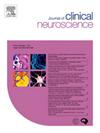Prospective evaluation of modified Cincinnati Prehospital Stroke Severity Scale for identifying large vessel occlusion
IF 1.9
4区 医学
Q3 CLINICAL NEUROLOGY
引用次数: 0
Abstract
Objective
To develop a novel, straightforward diagnostic scale for predicting large vessel occlusion (LVO) and anterior circulation LVO (ALVO) in the emergency setting, evaluating its validity against existing scales.
Methods
We prospectively enrolled patients with suspected stroke presenting consecutively at the National Comprehensive Stroke Centre’s emergency department between February 20, 2022, and November 11, 2022. Emergency physicians assessed each patient using the modified Cincinnati Prehospital Stroke Severity Scale (mCPSSS) and the National Institutes of Health Stroke Scale (NIHSS). The study analyzed the mCPSSS and other prevalent stroke scales to evaluate their efficacy in detecting LVO and ALVO, employing receiver operating characteristic curve (ROC) analysis and area under the curve (AUC) statistics to assess the scales’ sensitivity, specificity, positive predictive value (PPV), negative predictive value (NPV), and overall accuracy.
Results
A total of 383 patients with suspected stroke were included in this study. The performance in identifying LVO in the emergency setting was greatest for mCPSSS ≥ 2 with a sensitivity of 0.802 and specificity of 0.770, PPV of 0.644, NPV of 0.882, and accuracy of 0.781. mCPSSS ≥ 2 was 0.766 sensitive, 0.733 specific, PPV of 0.564, NPV of 0.886, and accuracy of 0.749 in predicting ALVO. The mCPSSS identified LVO and ALVO with an optimal cut-off value of 2, exhibiting AUC superior to those of other widely used stroke scales, with AUC values of 0.824 for LVO and 0.790 for ALVO.
Conclusion
The mCPSSS could serve as an effective and straightforward scale for identifying LVOs in emergency settings.
Clinical Trial Registration information: https://www.chictr.org.cn/ (ChiCTR2200056776).
求助全文
约1分钟内获得全文
求助全文
来源期刊

Journal of Clinical Neuroscience
医学-临床神经学
CiteScore
4.50
自引率
0.00%
发文量
402
审稿时长
40 days
期刊介绍:
This International journal, Journal of Clinical Neuroscience, publishes articles on clinical neurosurgery and neurology and the related neurosciences such as neuro-pathology, neuro-radiology, neuro-ophthalmology and neuro-physiology.
The journal has a broad International perspective, and emphasises the advances occurring in Asia, the Pacific Rim region, Europe and North America. The Journal acts as a focus for publication of major clinical and laboratory research, as well as publishing solicited manuscripts on specific subjects from experts, case reports and other information of interest to clinicians working in the clinical neurosciences.
 求助内容:
求助内容: 应助结果提醒方式:
应助结果提醒方式:


